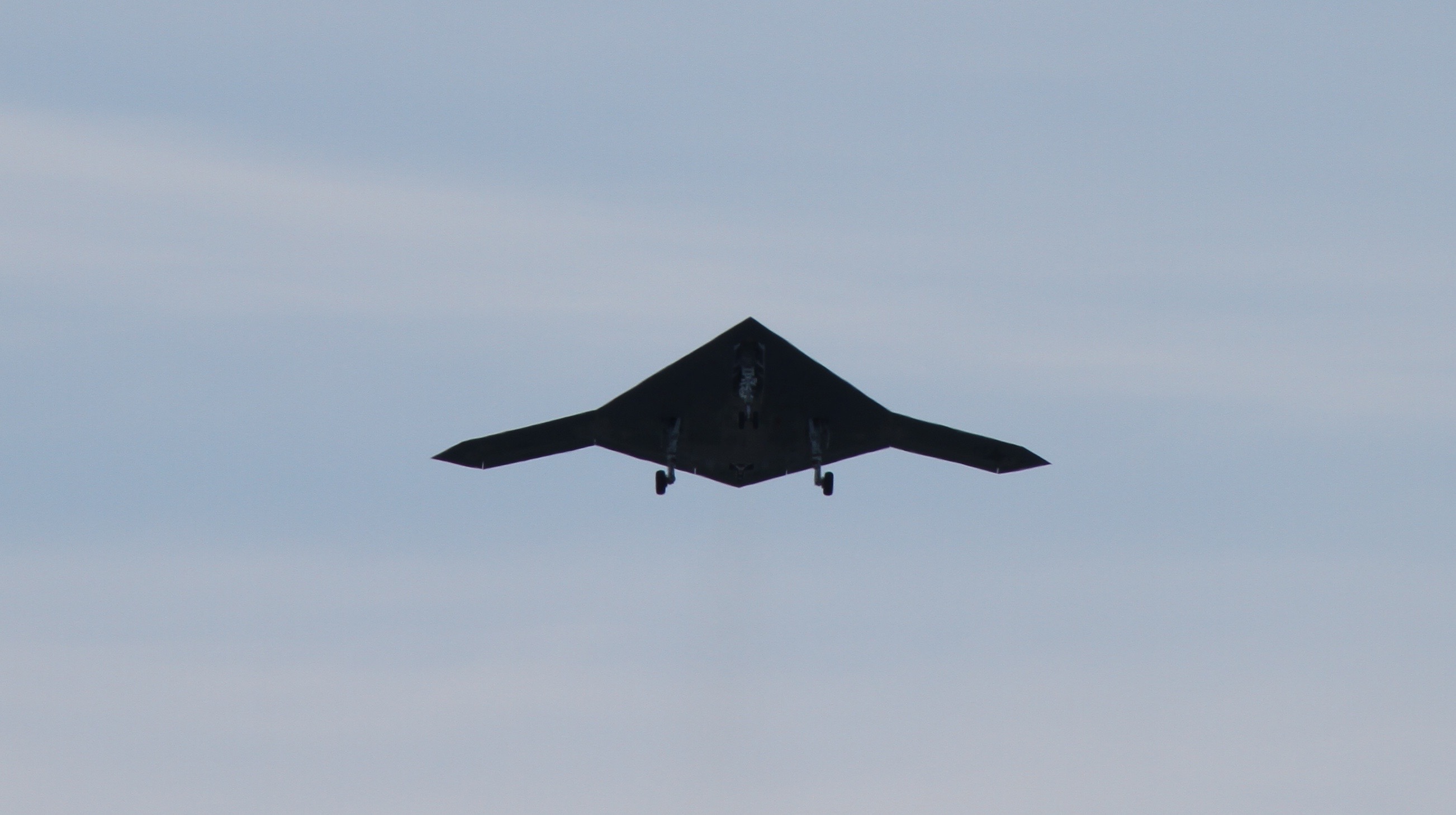
THE PENTAGON — One year into his job as the inaugural director of unmanned warfare systems (OPNAV N99), Rear Adm. Robert Girrier has overseen progress on three key unmanned platforms, begun work on a common-control system to plan and execute missions in multiple domains, and set priorities for out-year budgets.
But, he told USNI News in an Oct. 6 interview, perhaps the biggest accomplishment was finding the directorate’s niche, nestled between the domain-based requirements officers and the warfighters in the fleet.
“The charge to me was be the champion for unmanned systems, and show how they bring value, and then work on integrating them into the force, the fleet,” he said.
“That was the vision, and I have to say it was quite right-minded because the technology is increasing all around us and this is something we should tap into.”
To do that, though, required showing that unmanned systems as an idea was value-added.
“We want to embed, we want to mainstream unmanned systems,” he said.
“My approach has been not to create a new community called ‘unmanned,’ because I think that minimizes” what the technology can do to complement manned systems in traditional warfighting roles.
“If we can see farther . . . understand quicker, act faster, and adapt continuously, you’re going to be a very powerful fighting force. And that’s what we’re after,” Girrier said.

To integrate unmanned into the existing fleet in a way that has staying power, Girrier took a two-pronged approach: he explained the current programs of record in terms of how they fit in with fleet concepts such as maritime distributed operations, and he responded quickly to Fleet requests for unmanned support to increase trust and buy-in from the warfighters.
Take, for example, the anti-submarine warfare (ASW) Continuous Trail Unmanned Vessel (ACTUV). The partnership between N99, the Office of Naval Research (ONR) and the Defense Advanced Research Projects Agency (DARPA) on the 130-foot medium-displacement trimaran does not seek to replace anything a destroyer is doing, but rather would benefit the whole carrier strike group through the vessel’s months-long and thousand-mile autonomous capabilities.

“Just imagine in your mind’s eye a carrier strike group getting under way, and as part of the strike group’s screen you’ve got one of these or more,” he said of the ACTUV vessels. “Now you’ve freed up a screen ship to do something else, or push out further, or whatever you want it to do. [ACTUV] has the autonomy onboard to go off and do things that are meaningful, stuff that you want to get done, and again extends the reach—part of realizing this idea of distributed maritime operations.”
Similarly, the MQ-25A Stingray unmanned aerial vehicle would provide the air wing with organic mission tanking and recovery tanking, to “take what the carrier does and have it do it even better,” Girrier said—freeing F/A-18E-F Super Hornet pilots who would otherwise have to stick around the carrier for recovery tanking missions and instead letting them serve in a proper fighter-jet role.

Same with the large-diameter unmanned underwater vehicle (LDUUV), which would be hosted by a surface ship or attack submarine. The LDUUV’s endurance and autonomy to deploy at sea, conduct intelligence preparation of the environment (IPOE) or below-water intelligence, surveillance and reconnaissance (ISR) missions and then return to its host ship, is another “great example of adding capability, adding capacity to an existing manned part of the force.”
These programs come from Big Navy, with each filling important mission needs and also allowing the service to field a first instantiation of an unmanned vehicle in their respective domains and learn lessons as warfighters adopt the technology. Girrier said the opposite approach was also important in this first year—taking suggestions from the sailors at sea who are conducting missions and see opportunities for unmanned systems to aid them.
“Our association with the fleet is absolutely vital. The relevance of unmanned is not unmanned for unmanned’s sake, it’s not us pushing these systems onto the fleet but listening, being responsive to what their needs are,” Girrier said.
A prime example of this is the Enhanced Recovery of Group 1 UAVs (ERGU) project. The Navy currently uses the RQ-20A Puma at sea but had no good way to recover the vehicles. Girrier said he heard from the Fleet, “’When we recover these things we often land them on the water, and that’s not always the most uneventful evolution, sometimes we damage these things.’ And so we listened to that demand signal from the fleet, saying, ‘Hey, landing these things on the water can cause some damage; we’d really prefer an automated recovery mechanism.’”
A guided-missile destroyer on deployment is currently testing the ERGU system, which Girrier said allows the Puma to fly into an automated capture system instead of hitting the water, requiring crewmembers on a small boat go retrieve the UAV. He said the project was not complex, but it exemplifies rapid learning, a timely response to fleet requests and an effort to make unmanned systems more usable—which in total builds trust in unmanned as an idea and builds momentum for whatever system is fielded next.
Girrier said he was able to pursue several prototyping projects in Fiscal Year 2016—including both the ERGU system and a reconfigurable software payload addition to the Broad Area Maritime Surveillance—Demonstrator (BAMS-D)—and would begin to do the same in FY 2017 as soon as funding is made available.
Several programs are ready to do as soon as the money shows up, he said, including efforts to focus on unmanned underwater systems and improve their endurance and navigation capabilities and introduce new ways to recharge UUVs at sea to increase persistence.
“From ideas and concepts to formal programs of record and projects, to prototyping in ’16 to what we have lined up in ’17, to interacting with the Fleet and being responsive to demand signals, that’s what this year’s been about,” Girrier said of his first year at the new directorate.





